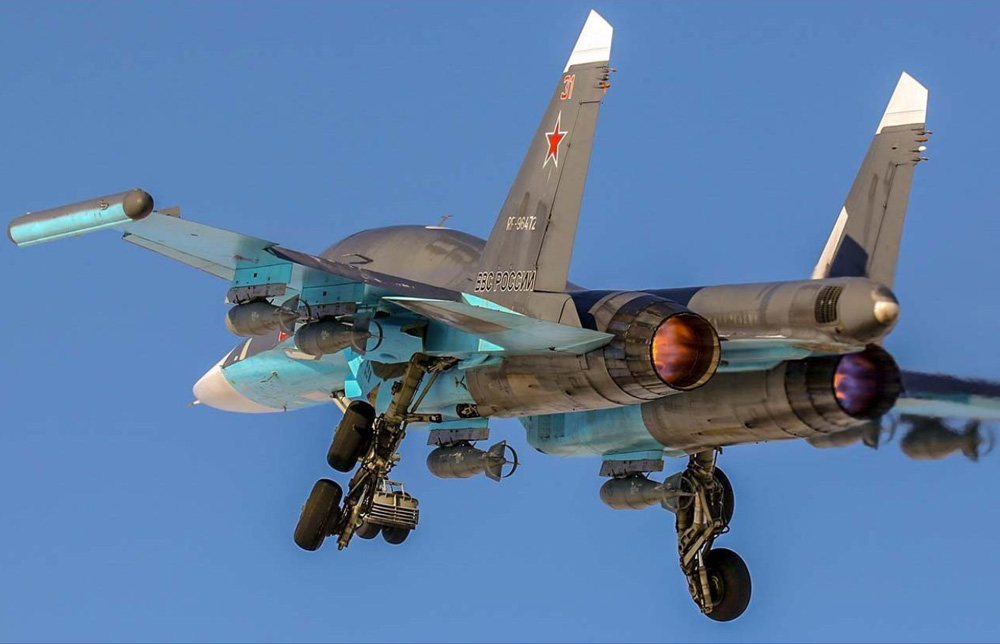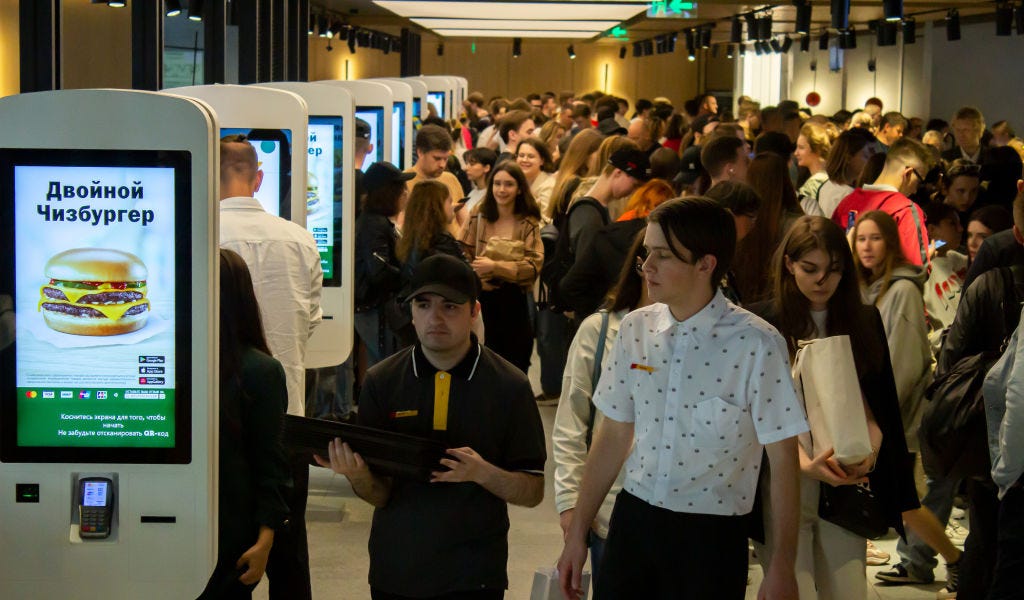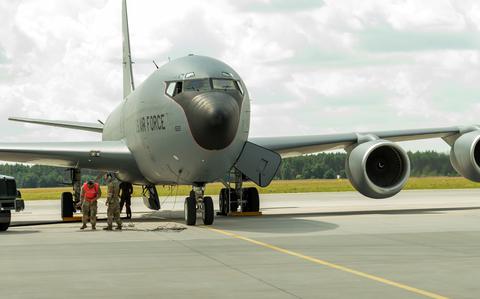The most interesting
A very interesting implication is that nato has a glaring hole in air defense and that our touted air superiority will have little impact on stand-off munitions of many sorts. This we have an inability to assist Ukraine in this regard
NATO has been able to provide some good short range AD, but there isn't much there for medium and the long range systems are more for ballistic missile defense.
Everyone builds the systems for the war they expect to fight. The US was caught flat footed in Vietnam, Iraq, and Afghanistan because it never built a force for fighting an insurgency war. In Vietnam they brought A-26s built in WW II out of retirement for the COIN (counter insurgency) mission. In Afghanistan and Iraq they modified and built new vehicles to defend against IEDs. A lot of those vehicles have been given to Ukraine because the US is dumping them from service. They don't fit into US war doctrine anymore.
NATO strategy involves overwhelming air power to knock out enemy air and air defense in the first few days, then control the skies. Russia and the USSR before them knew this and built a force to make doing that as costly to NATO as possible. Soviet, Russian, and former Soviet armies have a lot of AD because it's been long standing Russian/Soviet doctrine. NATO doesn't because it's not part of the doctrine except for close air defense to pick off the occasional aircraft that slips through the fighter cover.
@wdolson trent makes too big a deal of the logistics weakness of Russia. Napoleon moved a massive army to Moscow on horses and foot. Vietnam moved equipment for an entire corps on the various components of the ho Cho Minh trail and as someone that has been in that area after that war I can assure you it doesn’t get much more rigorous. The plains and forest of Europe are simple by comparison.
An early 19th century army used horses instead of trucks and the army foraged for food rather than bring their own. The French developed a method of canning food in glass jars by 1809 and they had some canned food on their march on Moscow in 1812, but the army still supplemented its rations by stripping anything edible from the countryside. The transport vehicles had to forage for food too. They weren't bringing hay.
The North Vietnamese were fighting an insurgency war which has a different supply footprint from an army trying to take and hold territory. Insurgents are only equipped with weapons they can carry. The largest equipment might be a machine gun or a mortar. The North Vietnamese also had a lot of manpower to carry ammunition and light arms to the front.
The USA has always been starved for human capital and that drove many of our industrial innovations. Russia mostly hasn’t. In regards to this conflict Russia is in close proximity to rail and thus it is not impacted.
Russia during the years of the empire and the USSR didn't have a serious manpower problem, but it does now. The USSR in 1989 had 286.7 million people and Russia has about half that now. On top of that, conscription is very unpopular in modern Russia and Putin has had to be very careful in drafting people. They only did the partial mobilization because Putin knew that a full mobilization could have led to widespread unrest and possibly civil war. As it is, a lot of recruitment centers were fire bombed and mobilization was very unpopular.
Politically Russia can't grow the army much more without risking rebellion.
One of the things Putin did to stay in power was he fostered political apathy. He made people not really care about politics. But apathy in wartime is a problem because the people won't get behind the war. Putin needs to raise political interest, but there are three factions: the anti-war faction, the warhawk faction, and Putin's faction. Raising political interest raises the risk that the newly politically active will move into one of the other camps than his. If a lot of people move into the anti-war camp, then he faces internal rebellion, if a lot of people move into the warhawk camp he faces someone from his right bumping him off and taking over to turn the country into an war state. In this latter scenario, the nuclear weapons will probably start flying.
Ukraine does not even target the logistics ability of Russia despite the supposed weakness Trent harps on. Why? They are not idiots. Answer it is a robust network with 3 choke points . They took one out. They will undoubtedly move to target the others this summer. It is the bridges rather than truck fleet that is the vulnerability.
Ukraine has been targeting Russian logistics heavily now that they have western artillery. Most HIMARS strikes have been on logistical hubs. Because of HIMARS the Russians have had to move their logistics hubs further back, out of HIMARS range and rely more heavily on trucks to move supply the last 90 Km. It has resulted in units at the front being starved for supply. On intercepted phone calls supply shortages is a common complaint.
Taking out bridges has a draw back. It slows down enemy supply, but it also hinders you on offense. With bridges out, your army needs to wait for engineering units to put in temporary bridges at every river or other crossing where there was a bridge. If they want to move quickly, they will want to leave the bridges in place.
Ukraine has spent February and March and now April targeting ew systems and artillery. Which tells you what Ukraine thinks they need to do to change the war.
The telling point from the CNA report is that nato has the exact same vulnerabilities as Ukraine in regards to certain defensive needs. Also since Russians are not idiots I would expect them to incorporate lessons learned and focus future training on more integrated attacks just as the Russian army does effective attacks with artillery and infantry. During the Korean War the Russian Air Force were not complete idiots and were effective.
Many of the MiG pilots in the Korean War were WW II pilots.
NATO's force structure is different from Ukraine's. NATO doctrine is built around air power and Ukraine never had enough air power to make a difference. Ukraine has been able to deny the Russian's air superiority, but they could never achieve it themselves. They didn't have enough aircraft or pilots.
NATO has an air defense weakness, but that's because it has an air dominance doctrine. If something were to deny a NATO force control over the air, it would face troubles on the ground.
For Ukraine it is clear why they are ratcheting up calls for air defense help. They are nearly depleted. The lessons in this report would strengthen those wanting to supply missile based defense instead of f16.
The bulk of the world's missile based AD is Russian made. Finding more of that from a country willing to sell it or give it to Ukraine is going to be tough.
Ukraine does have much better short range defenses now, but the longer range stuff is in short supply.
Ukraine has to walk a tightrope here. Surrendering territory to Russia in a peace deal is politically unacceptable to Ukraine. If Zelensky tried, he would likely be ousted and the war would continue. Ukraine's majority attitude is back to the pre-2014 borders or die trying. Zelensky is just the spokesperson for this attitude.
Ukraine has to play nice with China and try to get them to hold back on full scale military aid to Russia as long as possible. If the offensive goes well, the issue might be moot. China can help Russia replace their lost equipment after Russia is kicked out of Ukraine in that scenario.
China can help Russia with ammunition and small arms, but they likely can't help Russia that much with heavy equipment. Russia doesn't have trained crews for their fighting vehicles anymore. Giving them new tanks and APCs would help a little, but without training, they would likely just become targets.
If Russia could get new artillery and ammunition, that might make a difference. Ammunition is in short supply and their guns are worn to a point they are very inaccurate.






